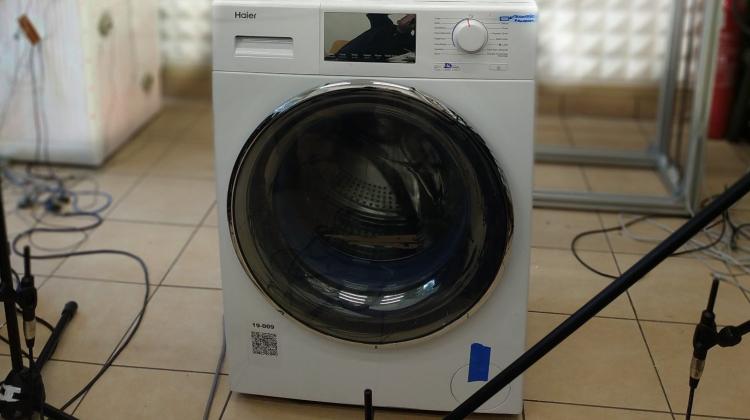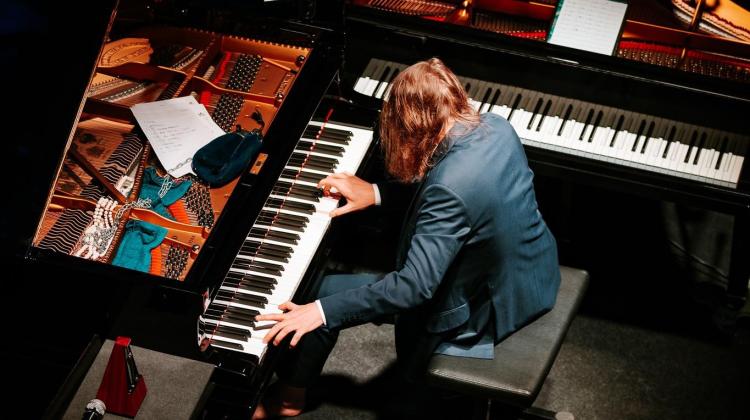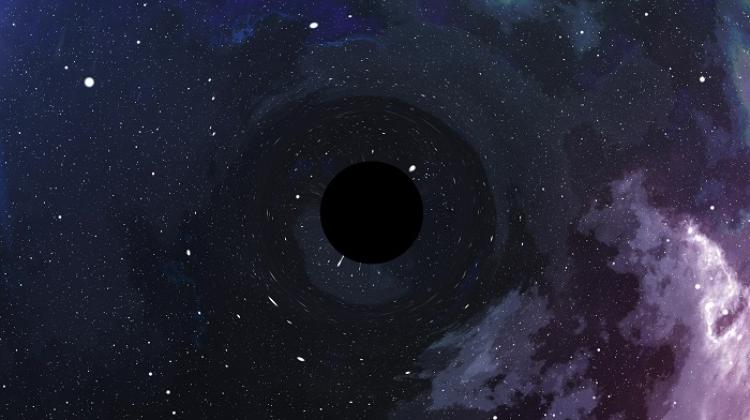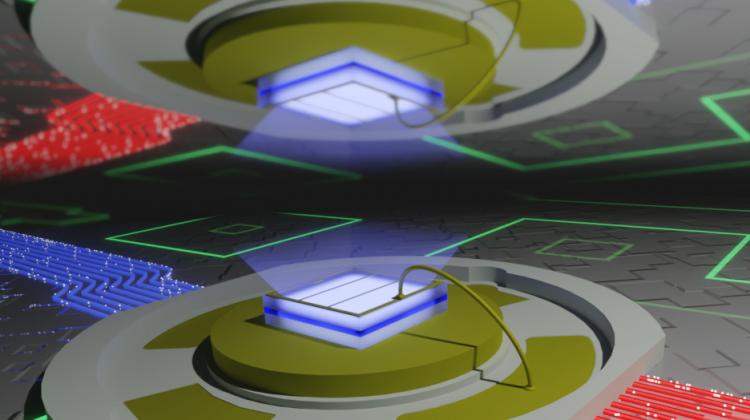Warsaw students turn Schrödinger's cat upside down
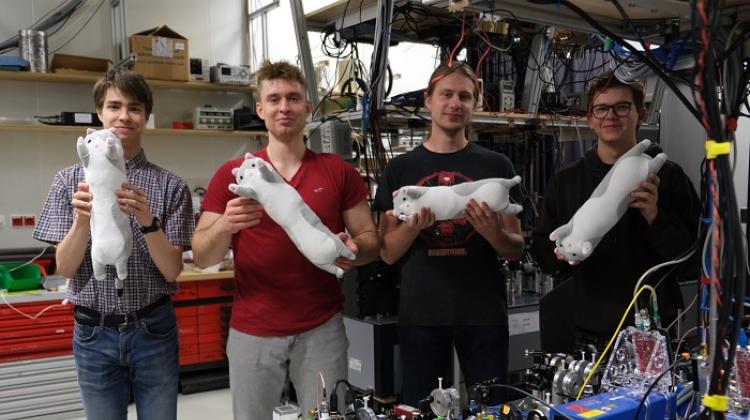 Source: University of Warsaw. Students in the laboratory present the rotation of Schrödinger's cats (credit: S. Kurzyna and B. Niewelt)
Source: University of Warsaw. Students in the laboratory present the rotation of Schrödinger's cats (credit: S. Kurzyna and B. Niewelt)
Students at the Faculty of Physics of the University of Warsaw and researchers from the QOT Centre for Quantum Optical Technologies have developed an innovative method that allows the fractional Fourier Transform of optical pulses to be performed using quantum memory.
According to the university, this achievement is unique on a global scale, as the team was the first to present an experimental implementation of the said transformation in this type of system.
In their work, the students tested the implementation of the fractional Fourier Transform using a double optical pulse, also known as a 'Schrödinger's cat' state. The results of the research were published in Physical Review Letters.
'Before direct application in telecommunications, the method must first be mapped to other wavelengths and parameter ranges. Fractional Fourier transform, however, could prove crucial for optical receivers in state-of-the-art networks, including optical satellite links. A quantum light processor developed at the UW makes it possible to find and test such new protocols in an efficient way,’ say the university’s press release.
According to the release, waves, such as light, have their own properties - pulse duration and frequency (corresponding, in the case of light, to its colour). It turns out that these characteristics are related to each other through an operation called the Fourier Transform, which makes it possible to switch from describing a wave in time to describing its spectrum in frequencies
The fractional Fourier Transform is a generalisation of the Fourier Transform that allows a partial transition from a description of a wave in time to a description in frequency. It can be intuitively understood as a rotation of a distribution (for example, the chronocyclic Wigner function) of the considered signal by a certain angle in the time-frequency domain.
It turns out that transforms of this type are exceptionally useful in the design of special spectral-temporal filters to eliminate noise and enable the creation of algorithms that make it possible to use the quantum nature of light to distinguish pulses of different frequencies more precisely than traditional methods. This is especially important in spectroscopy, which helps to study chemical properties of matter, and telecommunications, which require the transmission and processing of information with high precision and speed.
Lenses and the Fourier Transform?
An ordinary glass lens is capable of focusing a monochromatic beam of light falling on it to almost a single point (focus). Changing the angle of incidence of light on the lens results in a change in the position of the focus. This makes it possible to convert angles of incidence into positions, obtaining the analogy of the Fourier Transform, in the space of directions and positions. A classical spectrometer based on a diffraction grating uses this effect to convert the wavelength information of light into positions, allowing us to distinguish between spectral lines.
Similarly to the glass lens, time and frequency lenses can convert pulse duration into its spectral distribution, or an effective Fourier Transform in time and frequency space. The right selection of powers of such lenses makes it possible to perform a fractional Fourier Transform. In the case of optical pulses, the action of time and frequency lenses corresponds to applying quadratic phases to the signal.
To process the signal, the researchers used a quantum memory - or more precisely a memory additionally equipped with quantum light processing capabilities - based on a cloud of rubidium atoms placed in a magneto-optical trap. The atoms were cooled to a temperature of tens of a millionth of degrees above absolute zero. The memory was placed in a changing magnetic field, allowing components of different frequencies to be stored in different parts of the cloud. The pulse was subjected to a time lens during writing and reading, and a frequency lens acted on it during storage.
The device developed at the University of Warsaw enables the implementation of such lenses over a very wide range of parameters and in a programmable way. A double pulse is very prone to decoherence, hence it is often compared to the famous Schrödinger cat - a macroscopic superposition of being dead and alive. Still, the team was able to implement faithful operations on those fragile dual-pulse states.
The publication was the result of work at the Quantum Optical Devices Laboratory and Quantum Memory Laboratory in the 'Quantum Optical Technologies' Centre, with the participation of two master's students: Stanislaw Kurzyna and Marcin Jastrzębski, two undergraduate students: Bartosz Niewelt and Jan Nowosielski, Dr. Mateusz Mazelanik, and lab heads Dr. Michal Parniak and Professor Wojciech Wasilewski. The results were also recognized by the American Physical Society, which awarded Bartosz Niewelt a presentation grant award during the recent DAMOP conference in Spokane, WA. (PAP)
PAP - Science in Poland
kol/ bar/ kap/
tr. RL
Przed dodaniem komentarza prosimy o zapoznanie z Regulaminem forum serwisu Nauka w Polsce.


